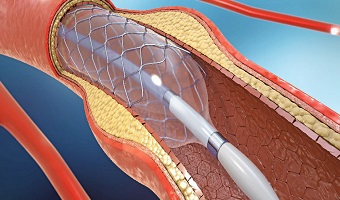
Angioplasty is a non-surgical procedure, which opens blocked coronary arteries and restores blood flow to the heart.
The heart is a muscular organ at the centre of the circulatory system that contracts and relaxes rhythmically to pump blood into different blood vessels, which carries it to the different parts of the body.
The coronary arteries supply oxygen-rich blood to the heart.If any of the coronary arteries become narrow or blocked, due to cholesterol buildup and fatty deposits (plaque), the blood flow to that part of the heart becomes slow or gets blocked as a result. The plaque accumulates over time and the arteries harden. The hardened arteries are unable to expand to their fullest capacity, thereby reducing the flow of oxygen and blood supply to parts of the heart.
Types of Angioplasty
- Balloon Angioplasty
- Balloon Angioplasty with Stent Insertion
- Laser Angioplasty
Depending on the patient’s condition and requirement, a cardiologist can take anywhere between 30 minutes to 3 hours to perform each type of angioplasty.
Symptoms when u required Angioplasty
- severe chest pain, which gets worse with emotional stress or vigorous physical activity
- sensation much like an elephant sitting on the chest
- irregular heart palpitations
- shortness of breath
- dizziness
- weakness
It’s possible to have significant coronary artery disease (CAD) with multiple blockages greater than 70% and yet experience no symptoms of angina on exertion. This is called a silent heart attack. In most of the cases this can happen to people who lead a very sedentary lifestyle.
Angioplasty is not generally recommended for blockages below 70%.
